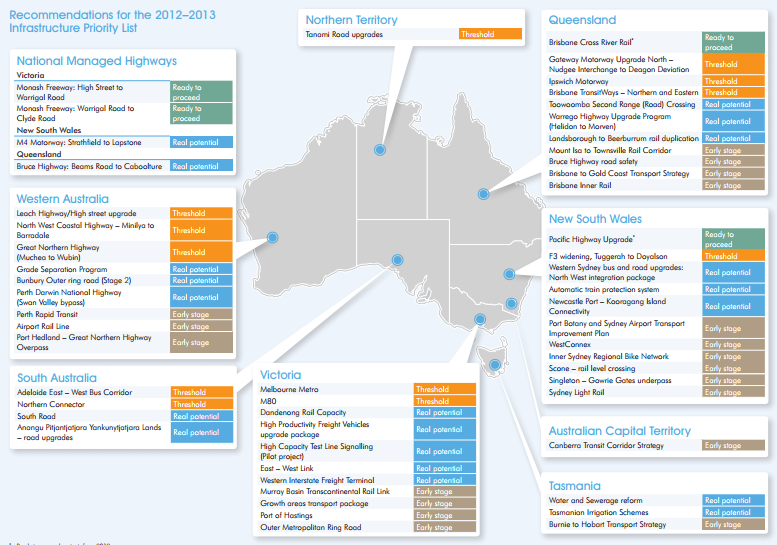For a party so horrified by debt, the Abbott team is really doing its utmost to grow it as fast as possible. From The Australian:
PROTEST groups that stymie major infrastructure projects will be targeted as the Coalition seeks to speed up an $11.5 billion roads program and fight off fears of an economic slowdown.
Vowing to remove obstacles to new motorways, the Abbott government is launching talks with the states to examine environmental rules blamed for delaying projects that could boost the nation’s growth.
The moves challenge “not-in-my-backyard” protesters on the grounds that vital economic infrastructure cannot be held hostage to interest groups indefinitely as long as communities are consulted on new plans.
The push comes as the Coalition is being urged to abandon its aversion to public debt and give a body such as Infrastructure Australia more independence to realise the government’s goals.
Two of Australia’s most eminent economists say public borrowing is a sensible way to upgrade ageing infrastructure, provided projects pass “explicit, transparent, and robust benefit-cost assessments”.
A paper to be released today by professors Max Corden and John Freebairn argues that debt is the best way to shift the cost of paying for infrastructure to the the future generations of taxpayers who will benefit most from it.
While Tony Abbott and Warren Truss have unveiled billions of dollars in spending on roads this year, rising further over time, the government believes that barriers to the construction could put growth at risk.
Sensible enough so long as the projects have “explicit, transparent, and robust benefit-cost assessments” which these kind of do, so long as you ignore the public transport projects that are listed above them in Infrastructure Australia’s priority list:

Anyway, at least in macro terms, the spend is welcome. In fact, I suspect that it is only the beginning of a dramatic acceleration in public investment which is going to be too late, coming in in 2016. Let us not forget the magnitude of the challenge as the the great capex abyss looms. This may also help explain why the NBN will continue to pass premises for three more years. From Goldman Sachs:

Urgency is warranted.
2013_IA_COAG_Report_National_Infrastructure_Plan_LR.pdf by Lauren Frazier

